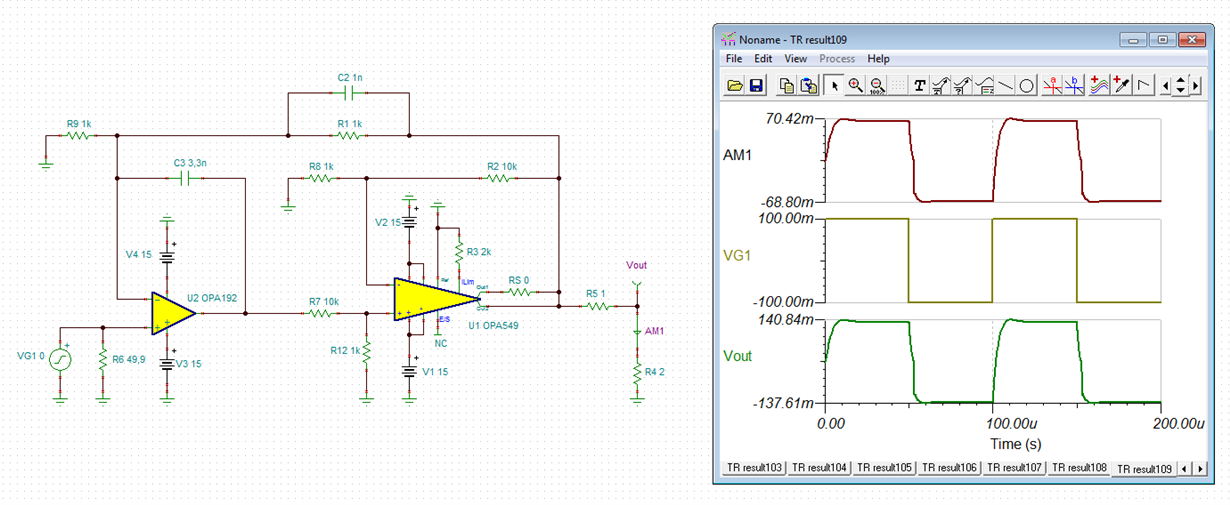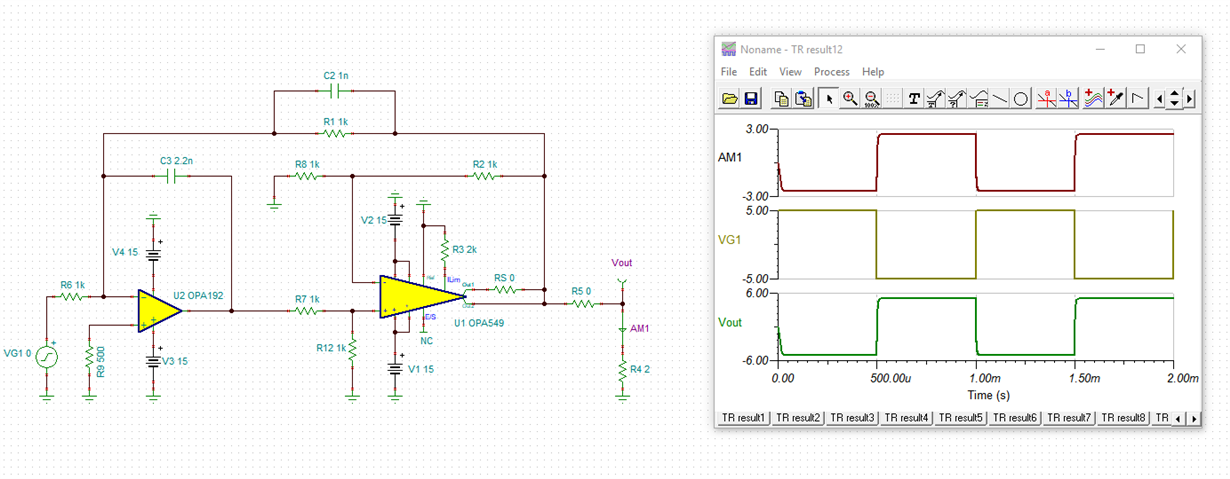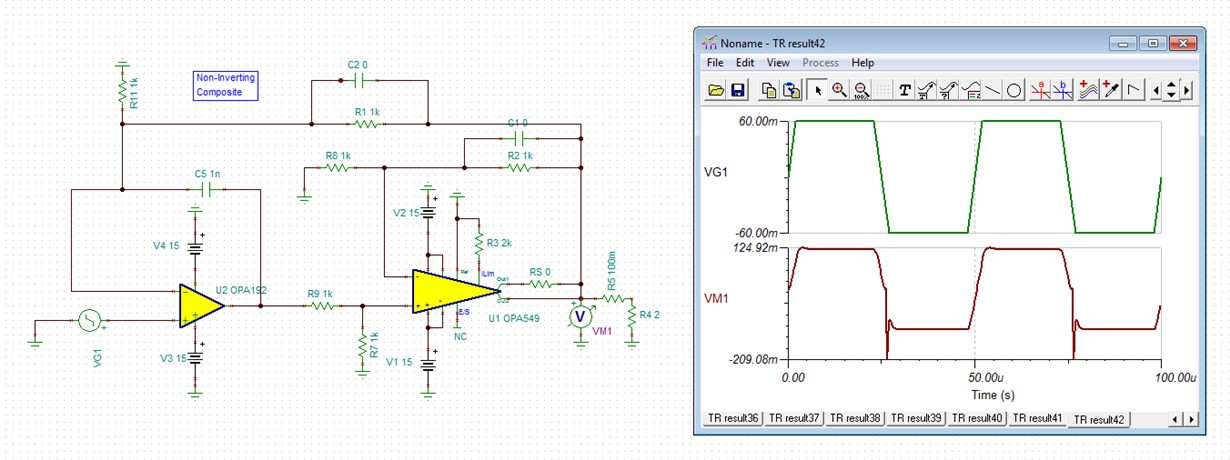Other Parts Discussed in Thread: TINA-TI, , OPA192, OPA549, THS3491, OPA191, OPA211, LM3886, OPA210, OPA548
Tool/software: TINA-TI or Spice Models
Hi, I want to build a composite amplifier using OPA192 + OPA549-HiRel with improved dc accuracy and drift performance. Could you please help me with this circuit? I build one using TI-Tina, but there are simulation convergence errors, I also do not know whether it can improve the dc and temperature drift performances or not.


















